Site will be
unavailable for maintenance from June. 4, 11:30 p.m., to June 5, 12:30 a.m. ET. Thank you for your
patience!
Children and youth lead the fight against child trafficking in Ethiopia
By Maureen Siele, Sr. Advisor - Regional Communications Africa Posted on 07/28/2023
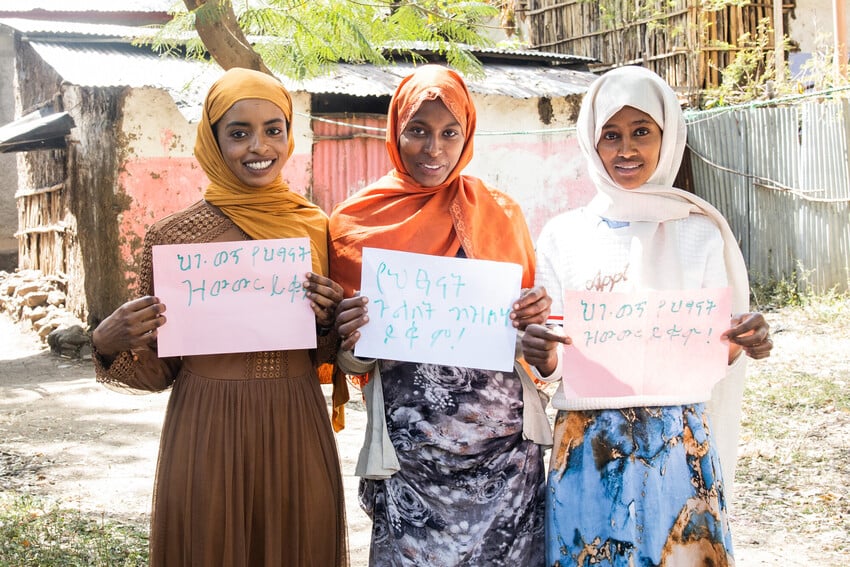 Youth activists Radwa, 18, Samira, 19, and Hayat, 18, hold up signs that read "Stop child trafficking!" "End child marriage!" and "End child labor!" in their native language, Amharic.
Youth activists Radwa, 18, Samira, 19, and Hayat, 18, hold up signs that read "Stop child trafficking!" "End child marriage!" and "End child labor!" in their native language, Amharic.
At the age of 17, Radwa nearly fell prey to human traffickers.
It started when her parents were approached by a “broker.” Illegal brokers are middlemen who charge a fee to facilitate migrants’ entry across national borders. This man promised Radwa’s parents that if she came with him, she would be connected to a well-paying job as a housekeeper.
“I was under a lot of pressure from some of my peers and family members to travel,” Radwa says. “Eventually, I yielded to the pressure. I was told that there were great job opportunities waiting for me. My plan was to go and make good money, then come back and start a business.”
Out of desperation, her parents, who are local farmers, agreed. To make matters worse, this was during the height of the COVID-19 pandemic. Their family business had just collapsed, and the future in Ethiopia looked bleak. Plus, an ongoing civil conflict near their home had made life unpredictable and nearly unbearable.
Luckily, Asha, a community volunteer working with ChildFund’s Child Protection in Emergencies (CPiE) project in the area, got wind of this plan, just in the nick of time – about a week before Radwa’s planned departure date.
Asha reported the case to the project staff and discussed it with community child protection committee members, who advised Radwa’s parents against sending their daughter abroad. After understanding the dangers, they agreed that it was best for Radwa to stay in Ethiopia and continue her education.
What is child trafficking?
Child trafficking – defined by the United Nations as the recruitment, transportation, transfer, harboring and/or kidnapping of a child for the purpose of forced labor or exploitation – is a gross violation of human rights. It is a form of modern-day slavery that most often targets children and youth from impoverished and marginalized communities.
Even if children are rescued or escape, the physical and psychological trauma has a long-term impact. Such children often face stigma, making it difficult to reintegrate into society and rebuild their lives.
Unfortunately, increased internet access and the adoption of technological devices over the years have made it even easier for perpetrators to commit child trafficking crimes. Research conducted by the United Nations Office on Drugs and Crime (UNODC) shows how victims are being tricked with fake job offers or targeted and recruited via social media and online dating platforms, where people’s personal information is readily available. Meanwhile, sexual abuse and other forms of exploitation are also taking place virtually, with exploitative photos and videos of young people engaging in sexual acts sold on different platforms to customers worldwide.
Statistics from the UN Women report Trafficking in women and girls: Report of the Secretary-General (2020) indicate that women and girls represent 72 percent of all trafficking victims globally, and 77 percent of detected female victims are trafficked for the purpose of sexual exploitation.
Child trafficking in Ethiopia
Children in conflict-affected areas such as Ethiopia’s North Wollo Zone are even more vulnerable to trafficking. Children trafficked for sexual exploitation are at high risk of prolonged periods of sexual violence, physical injuries, sexually transmitted infections and, for girls, multiple pregnancies.
According to the U.S. government’s 2022 Trafficking in Persons Report, scarce economic opportunities and poverty, coupled with familial encouragement, compel thousands of Ethiopians – including a substantial percentage of unmarried individuals younger than 30 – to transit out of Ethiopia, where they are vulnerable to trafficking. Undocumented economic migrants primarily take the northeastern route, via Djibouti or Somalia, to Yemen, and onward to Saudi Arabia and Europe.
For all these reasons and more, Radwa’s story is unfortunately not unique. Her neighbor Samira, 19, nearly fell into the same trap.
“My father is disabled. He cannot work, so he cannot provide for us,” Samira says. “Because he had heard stories from other people about how some families have become rich after their children went to work in the Middle East, he pushed me to go to Saudi Arabia. My mother had no say in all this.”
18-year-old Hayat shares a similar story. She refused pressure to go to the Middle East, insisting on completing her secondary education instead. Today, she is on the front lines of the fight to speak up against trafficking, having witnessed the devastating effects it has had on some of the young people she has met through the ChildFund CPiE project.
Pressure from family members and friends is a driving force behind child trafficking, as caregivers and youth influence each other. “Most parents believe what these traffickers say,” Asha, the community volunteer with the CPiE project, says. “They [traffickers] promise them heaven on earth, yet the reality is hell. We have to constantly sensitize them about the dangers of trafficking and the harm it causes.”
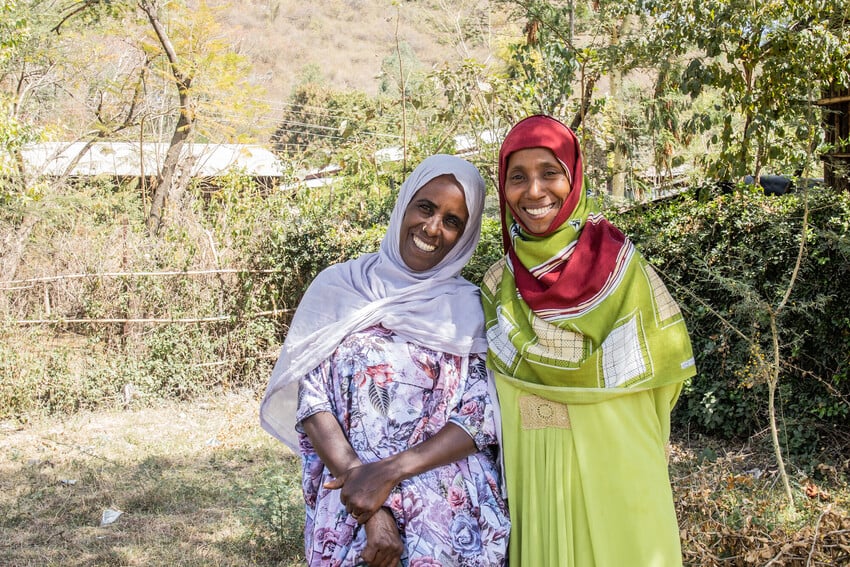 ChildFund community volunteers Asha (left) and Firdo (right) work with ChildFund's CPiE project to help raise awareness of child trafficking in their community.
ChildFund community volunteers Asha (left) and Firdo (right) work with ChildFund's CPiE project to help raise awareness of child trafficking in their community.
Surviving child trafficking
Boys can experience child trafficking, too. 18-year-old Said survived the horrific ordeal of being trafficked from Ethiopia to Djibouti en route to Saudi Arabia.
“Last year, in April, I was desperate for a new life. I was tired of living in poverty,” Said remembers. “My family and I had heard stories of people who went to the Middle East, made it, and are now living large. So my parents paid 20,000 Birr ($370) to one of the brokers. The plan was for him to take me to Saudi Arabia. But we only made it to Djibouti.
“I left here by car to Dubti [a town in Afar Region in northeast Ethiopia]. From there, we walked for three days on foot to the Ethiopia-Djibouti border. When we arrived in Djibouti, we were hidden in an old, abandoned classroom for a week. We had to stay indoors, with very little food, no toilets, and sleeping on the floor.
“We were caught by the police. After interrogating us, they deported me back to Ethiopia. Can you imagine they did not even beat me up?”
Said recounts being bundled into a bus that brought him back home.
“Looking back, I consider myself very lucky,” he says. “Some of my friends have gone through worse. Some were imprisoned and beaten up badly. At least now I am back home and continuing my education.
“I would like to be an actor one day, appearing on the big screen.”
Child trafficking can have devastating consequences for children, including long-lasting psychological trauma. Said suffered from this when he got back home.
“I experienced a serious mental breakdown,” Said says. “I was so disappointed and disturbed. I could not sleep at night. I would have constant flashbacks about what I went through. Sometimes, I still have these horrible episodes. Trafficking is so dehumanizing.”
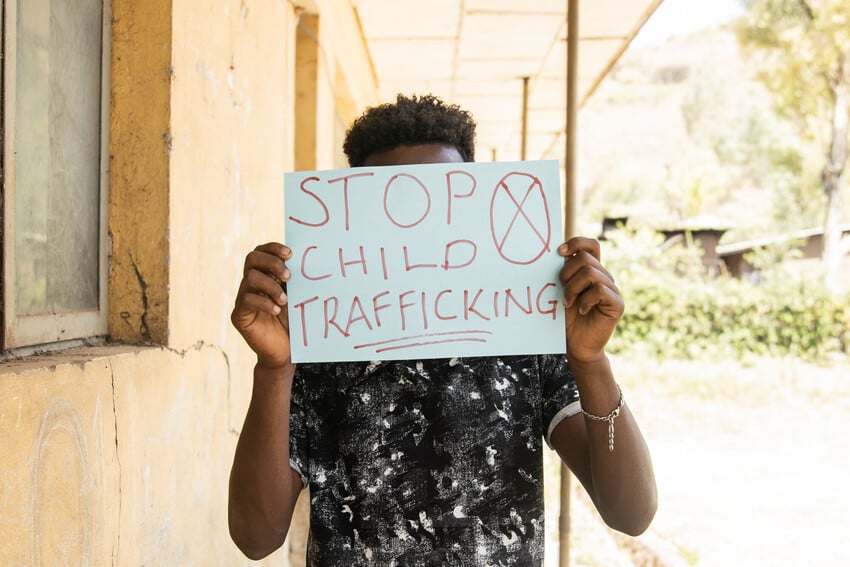 Said, 18.
Said, 18.
Said was enrolled back in school and is now in the tenth grade. He also began participating in ChildFund’s CPiE project, where he has become a strong advocate for child rights, boldly speaking up against child trafficking.
How we’re working to stop child trafficking
Through the Joining Forces Alliance Child Protection in Emergencies (CPiE) project, funded by the German Federal Foreign Office, ChildFund is working directly with communities in the North and South Wollo zones to prevent trafficking and support individuals who have been through it, helping them to rebuild and restore their lives.
“Since December 2021, we have been working with children, communities and the government to raise community awareness and strengthen community-based child protection systems, empower children with knowledge on how to protect themselves, and work with authorities to identify and prosecute traffickers,” says Tigist Tarekegn, senior child protection specialist with ChildFund Ethiopia. “We are also calling upon the government to implement stronger legislation that aims to prevent trafficking and provide better support for child victims.”
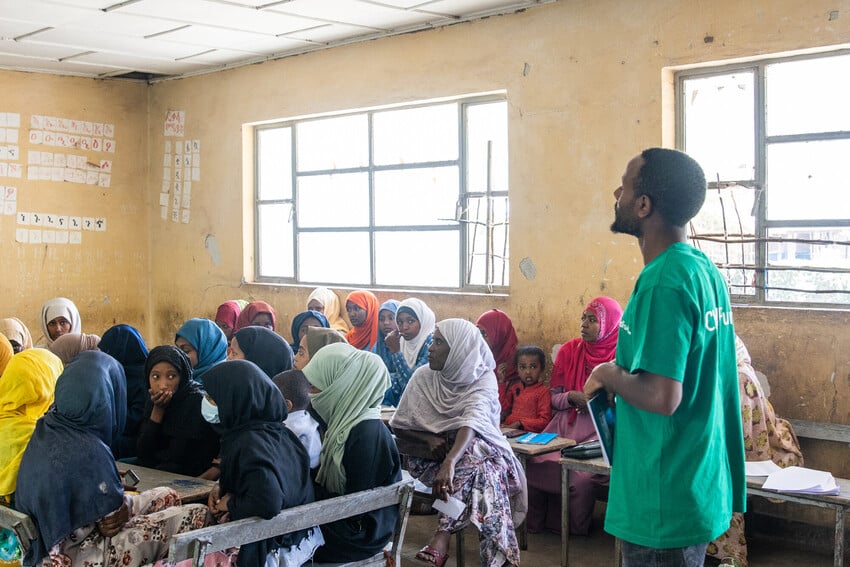 Project Officer Tesfaye Tesfa conducts an awareness-raising session on child rights with youth in Habru, North Wollo.
Project Officer Tesfaye Tesfa conducts an awareness-raising session on child rights with youth in Habru, North Wollo.
The CPiE project frequently brings children, youth and community members together to highlight the need to stem child trafficking, as well as address other rampant child rights violations in the community like early marriage, drug abuse, child labor and all other forms of child abuse, neglect, exploitation and violence. Overall, working with various stakeholders – including the government – the project aims to improve the protection of vulnerable children and youth through strengthened prevention, risk mitigation efforts and access to specialized child protection response services.
"I have learned a lot about child trafficking that I didn't know before,” Said says. “It hurts that I had to go through it. But this project has allowed me to interact with other youth who have had similar challenges. It has given us a lot of hope for a brighter future.
“We encourage each other and hope for a better future. We keep advising others who are thinking of taking this dangerous route that it is a million times better to struggle here at home and be safe and at peace than to be out there, constantly facing dangers and not knowing what will happen to you the next day.”
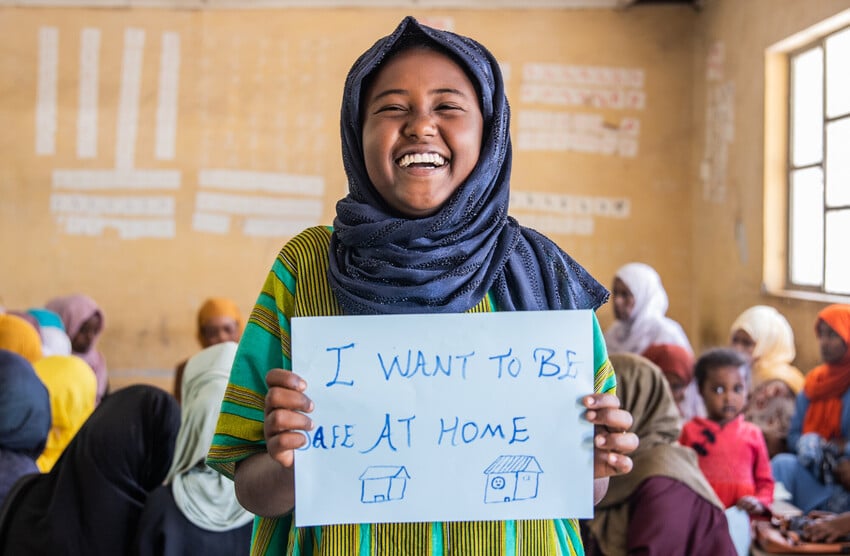
Loading...

